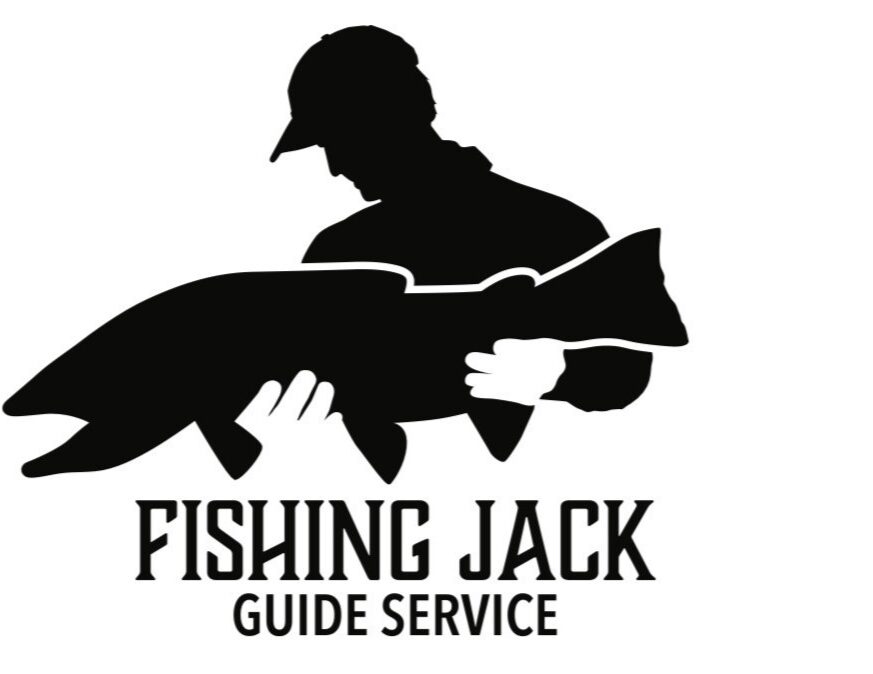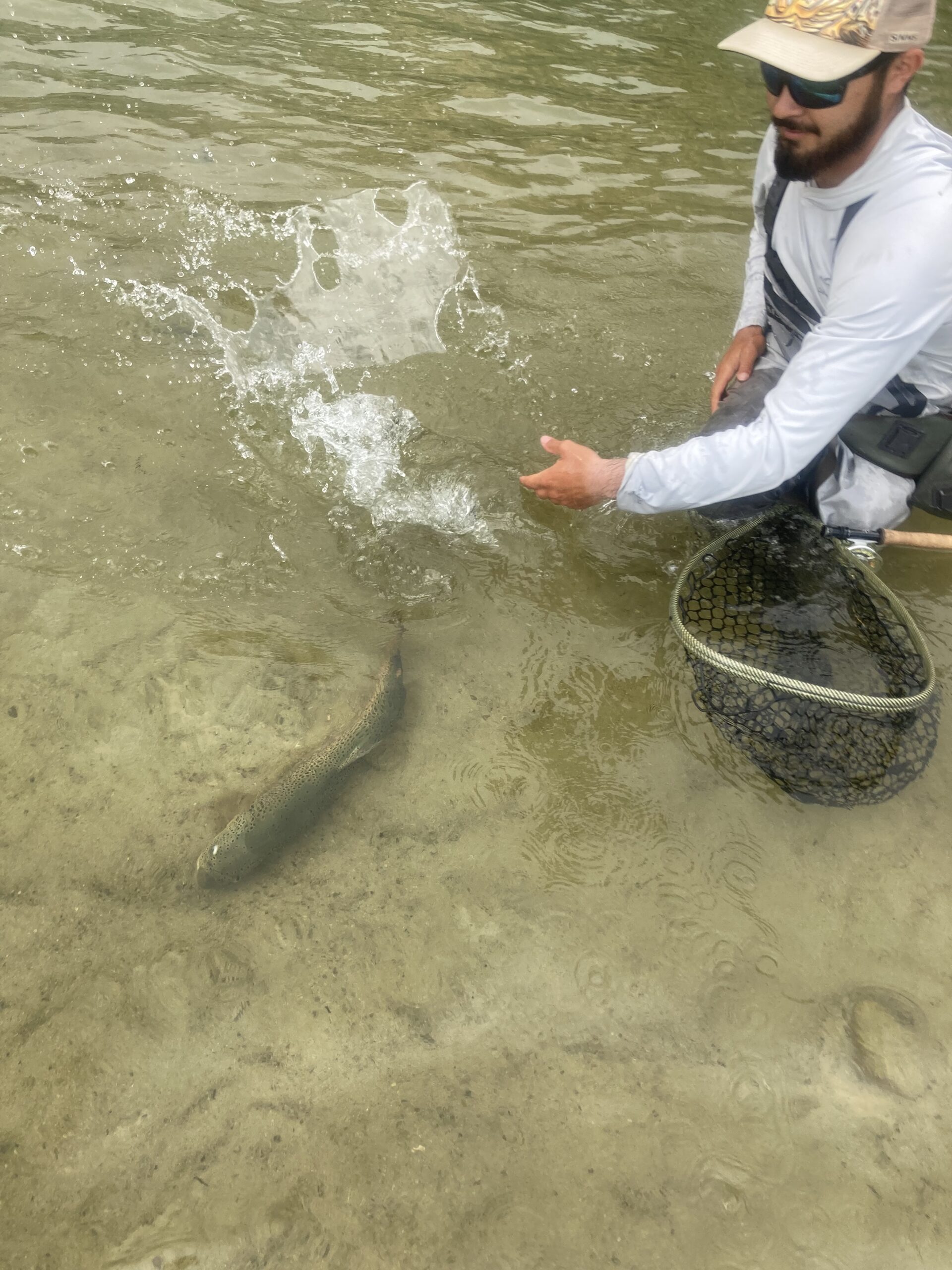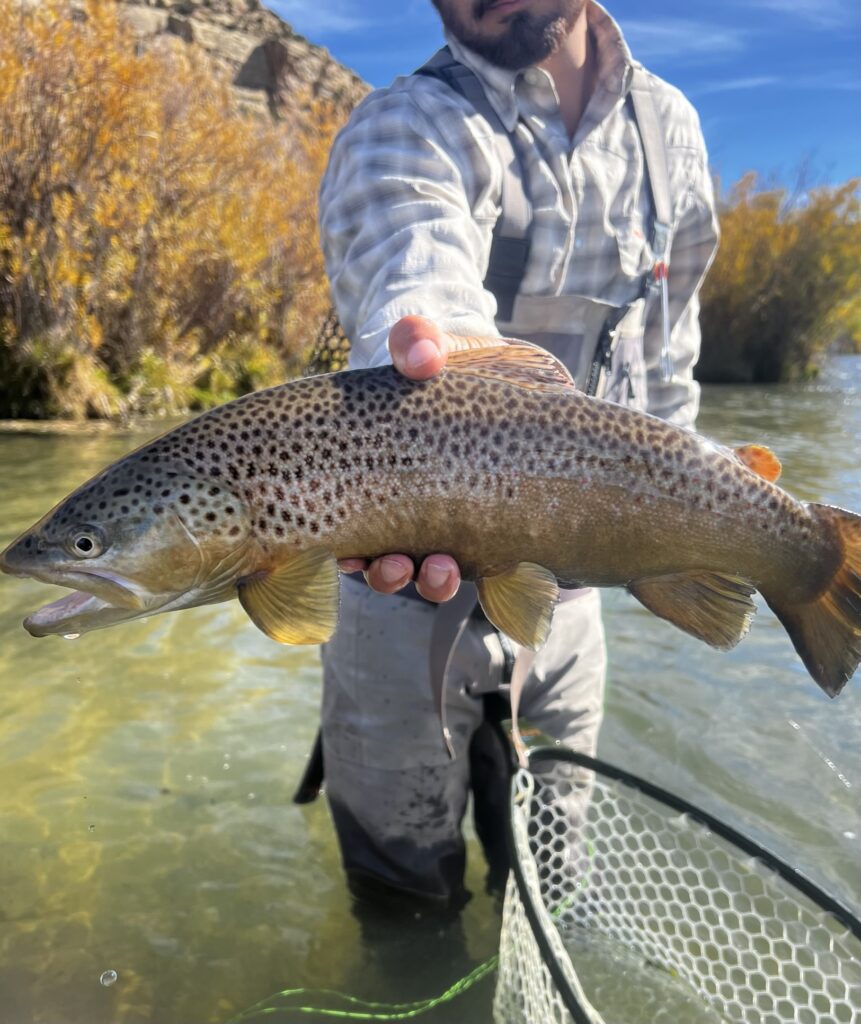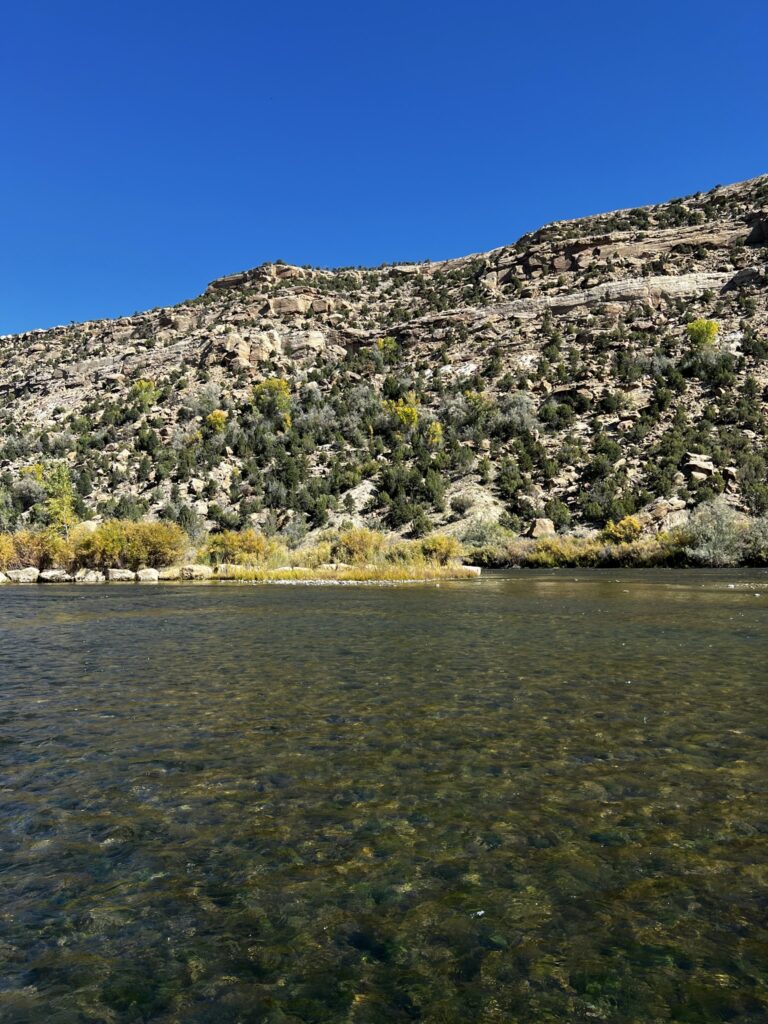Learn from my mistakes, so when you get your shot at a beast, you’ll know the drill.
In this article, I’m going to lay out some important tips for successfully landing large (or hefty) fish. Although these steps may pertain to any fish you may be trying to land, they will come in handy when you finally see that big brown you’ve been tracking for months.
MY MISTAKES
Before diving into the tips I have to offer, I want to take a moment to discuss the mishaps I have made when fighting fish in the 23–30-inch range.
The picture you see of the fish above is the first “large fish” I ever personally hooked while wade fishing the San Juan. When I first stumbled upon this fish, my initial reaction was to immediately start casting so that I wouldn’t “lose my opportunity”. This, accompanied with a racing heart, affected my casting, caused a large splash of the indicator, and resulted in the fish swiftly departing from my sight. Flash forward a few days later, I found the same fish sitting only about 15 feet away from where I had first found it. Again, I was quick to rush my casts, but to my luck, the fish did not spook. About 20 minutes’ worth of casting later, my indicator took a quick dive down, I set the hook, and fish on! This brown began peeling drag, my heart was racing, but surprisingly, I stayed calm. I fought the fish for about 2 minutes before, unbeknownst to me, my high would essentially come crashing down on my shoulders. As the fish began tiring, it came closer and closer. As I was reaching for my net, I could feel a victory at my fingertips, when suddenly, I became too excited, pulled too hard, and popped the hook from the fish’s mouth. I wouldn’t see this fish again for weeks.
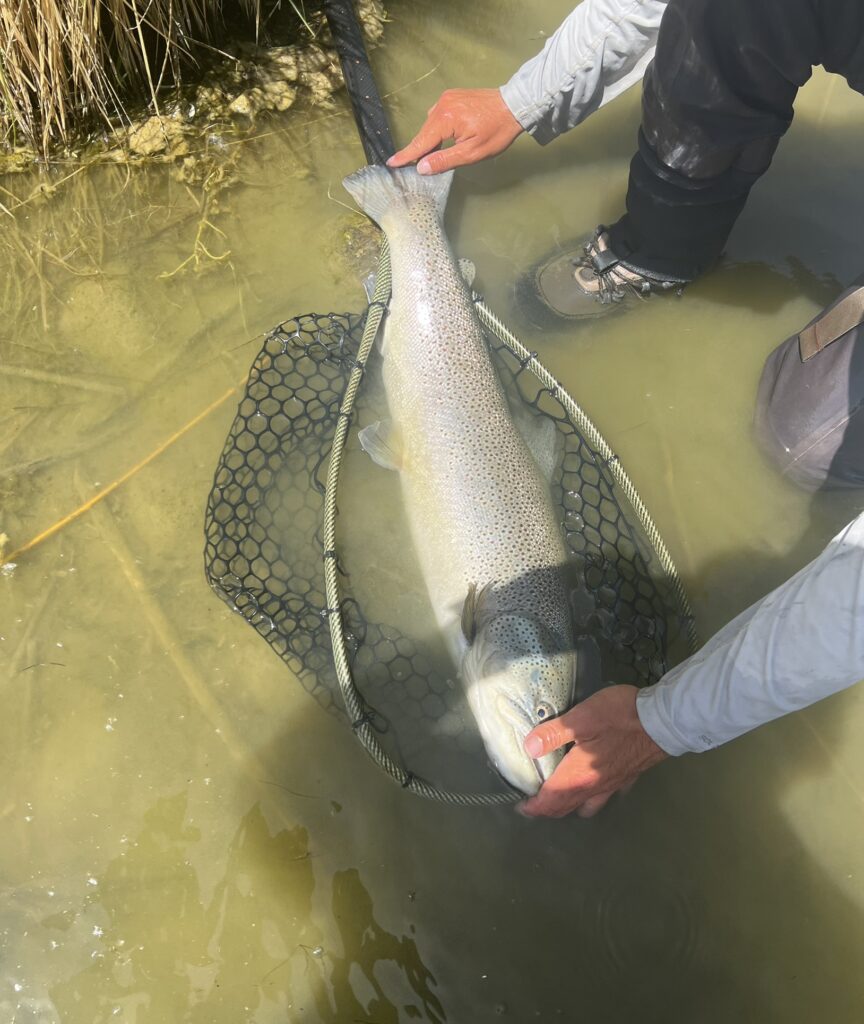
In another instance, I was hunting a large brown in a different section of the river. Now in this scenario, getting this fish to eat was not the hardest task — it was landing it. I recall the first time I got it to eat, and remember my indicator being taken completely subsurface. After my previous mistake with the other fish, I had no intention on rushing this. Taking my time fighting it, I knew I would be netting my first 30-incher. Suddenly, the line went limp, the fish swam off, and I retrieved my hooks to inspect them. The hook had been unrecognizably bent out.
One more error I personally experienced was with a larger sized rainbow. While sight fishing for it, my indicator paused very slightly, I set the hook, and sure enough, it had eaten one of my bugs. This fish fought completely different from the browns — jumping, flailing, heavy head shakes, tumbling, etc. For a good portion of the fight, I could easily turn its head to change its direction. It had eaten the bottom fly and I could see my dropper on top. However, when applying a bit more pressure with the rod as it was about to go on another run, I managed to stop it in its tracks, and the proximal portion of the leader came into contact with the fish. This rainbow had so much surface area, that the midge I had on top had caught the side of it, which meant the pressure was no longer connected to its head, but rather its side. The fish pulled line until the little flies couldn’t hold on any longer, and I retrieved both of my flies.
TIPS FOR THE BIG ONES
Since learning from these mistakes and landing multiple bigger fish, I want to offer a list of factors and techniques which I believe to be crucial for getting that “big one” into the bag:
1- Keep your rod arm high!
This is probably my most critical piece of advice when in the middle of a fight with a 23-30+ inch fish. Your arm, for the majority of the fight, should be level with, or above your head, no lower! The reasoning for this is due to the fact that many of these large fish have a body mass index that is catastrophically large (think of those large humpback browns or girthy rainbows). The last thing you want to happen is for that fish to make a sudden turn, catch your line, and get caught by another fly, or wrapped up in your leader. When this happens, consider that fish gone, because you will not be able to “horse-it-in” on 2-pound test without jeopardizing its health.
The basic idea here is that you need leverage over the fish. This is where boat fishing has a significant advantage over wade fishing, because most fish are already 5-10 feet under your indicator. Nonetheless, keeping your rod arm high also fosters better control over the fish, especially when they go on a long run, and your fly line is increasingly exposed to the pressure of the current.
2.) DON’T FISH WITH CHEAP HOOKS
The first 30-inch fish I ever hooked was lost because the hook had bent out. I recall it was a 1x gauge wire and made a paper clip look like steel rope. Nonetheless, it came in a 50 pack, was a lot cheaper than some of the other brands, so I bought it and began tying. I had never been so disappointed, not only in myself, but also a piece of metal.
Flash forward three months, I had begun tying on Lightning Strike 2x gauge emerger hooks as well as Umpqua’s 200R. The opportunity had once again presented itself for me to catch this monster. After a failed net job from a stranger (I felt worse for him than for me), I had gotten this hefty brown to eat for a 3rd time. Expecting the worst to happen again, I remembered that I was using equipment I was confident in. This allowed me the confidence to play the fish properly, while also minding the fact that I was using 6x fluorocarbon, so as to not get too comfortable. After about 6 minutes, the fish was netted, and I felt a wave of relief come over me. I had done it!
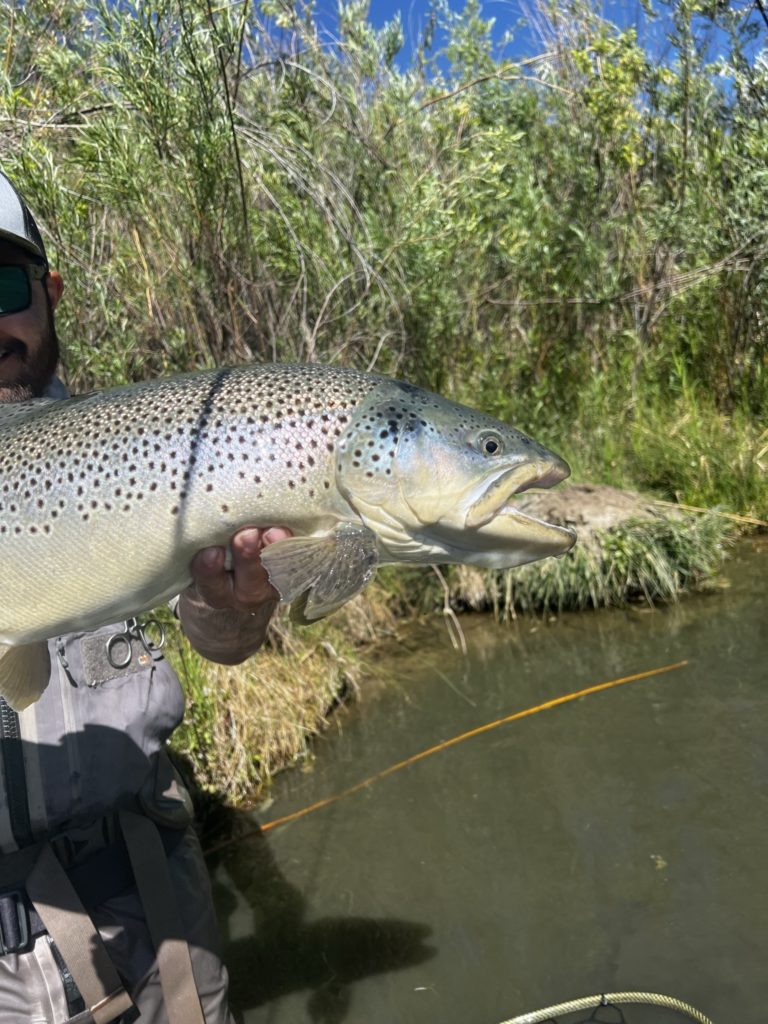
3.) Keep your cool!
Take a moment to think about your personal best trout on a fly rod. Remember that heart pounding feeling and the sweaty palms that followed? Do you also remember thinking, “This is going to look great on (insert social media platform)”?
There is a very fine balance between using your nerves to help you out, but also having them backfire on you. In a situation where you have a massive fish on the end of your line, you need to maintain a level of focus, but also without becoming too focused.
On two recent instances where I’ve netted a big brown without any problems, I wasn’t getting myself too worked up about the situation in front of me. I did all the necessary steps to ensure a safe and quick landing, but truly, I knew anything could go wrong at any second. Removing the pressure from myself to catch the fish helped me to think straight, and not take any course of action where one isn’t needed (running, yelling, falling, etc). Remember that you want to catch this fish for the simple act of catching it, not to impress strangers on the internet. Remember, even if you do lose the fish, there is always next time. The time will come when you need to net a 28-inch fish on your own and keeping a level head will benefit you through the duration of that fight.
I hope this article assists you in lowering the learning curve for a situation that isn’t typically covered. If you do not get out on the water very often and get your chance at a tank of a trout, it will be tremendously important that you consider these steps so you can save yourself from a painful learning experience like I have!
